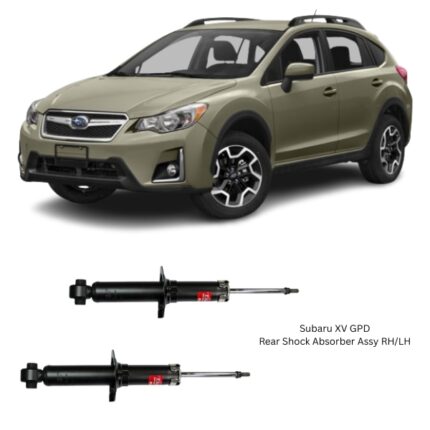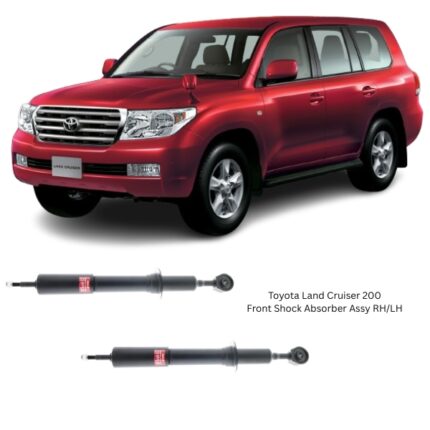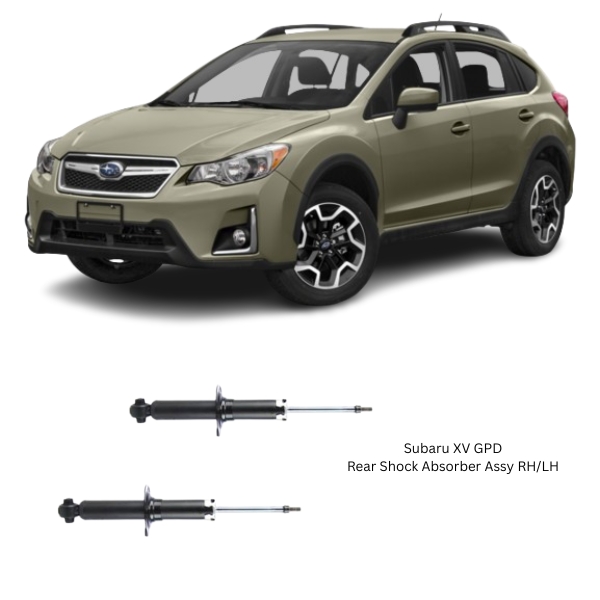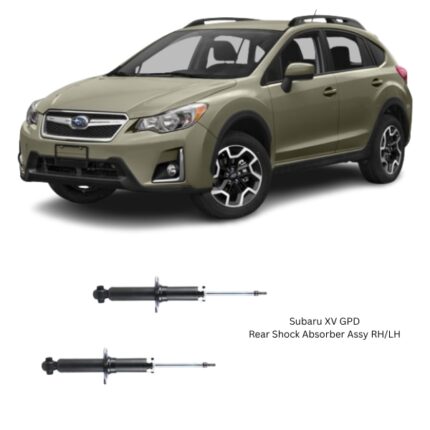Get Subaru XV GPD Rear Shock Absorber Assy RH/LH 340116 in Kenya
The rear shock absorber assembly (Right Hand and Left Hand) is a critical component of a vehicle’s suspension system. It is specifically engineered to control and dampen the oscillations of the rear springs, ensuring that the rear wheels maintain constant contact with the road. This not only improves ride comfort but also enhances handling precision, braking performance, and overall safety.
By design, shock absorbers are hydraulic devices that convert kinetic energy from road impacts into heat energy, which is then dissipated. The rear shock absorbers manage the vertical movement of the rear suspension, preventing excessive bouncing and ensuring that the car remains stable, even on uneven or rough road surfaces.
Importance of Rear Shock Absorbers
The suspension system is designed to serve two main purposes: passenger comfort and vehicle control. Rear shock absorbers play a central role in balancing these functions. Without them, the springs would compress and rebound uncontrollably, leading to excessive body movement, poor traction, and a very uncomfortable ride.
The RH (Right Hand) and LH (Left Hand) designations indicate that each side of the rear axle has its own specifically engineered assembly. Installing the correct side is essential for precise alignment, proper mounting, and optimal suspension performance.
How Rear Shock Absorbers Work
The rear shock absorber operates using hydraulic principles. Inside the cylinder is a piston that moves up and down within hydraulic fluid as the suspension reacts to road irregularities. The piston forces fluid through small valves, creating resistance that slows down and controls the spring’s motion.
Some modern shock absorbers also feature gas charging (usually nitrogen). The gas reduces aeration of the hydraulic fluid, which prevents foaming and ensures consistent performance, even under heavy use or prolonged driving.
There are two main designs commonly used:
-
Twin-Tube Design – Contains an inner working tube and an outer reservoir tube. It is durable and suited for a balance of comfort and control.
-
Mono-Tube Design – Features a single cylinder with higher gas pressure. It offers more precise damping and better heat dissipation.
Both designs aim to provide stable performance, reduce vibration, and enhance control over the vehicle.
Key Features
-
Durable Construction: Made from high-strength steel with anti-corrosion coating to withstand harsh conditions.
-
Hydraulic Damping System: Smoothly absorbs shocks and vibrations from uneven road surfaces.
-
Gas-Charged Option: Prevents fluid aeration and maintains consistent performance.
-
Precision Fitment: Designed specifically for RH and LH installation on the rear axle.
-
Integrated Bushings and Mounts: Minimize vibration transfer and simplify installation.
Benefits of Using Quality Rear Shock Absorbers
-
Ride Comfort
Rear shock absorbers reduce vibrations and jolts transmitted to passengers, ensuring a smoother, more comfortable driving experience. -
Handling and Stability
They prevent excessive body roll in corners, rear-end squatting during acceleration, and nose-diving under braking, allowing the driver to maintain better control. -
Safety
Stable tire-to-road contact ensures shorter braking distances and reduces the risk of skidding or losing control. -
Tire Longevity
Even distribution of weight and consistent damping prevents uneven tire wear, extending tire lifespan. -
Suspension Protection
Shock absorbers reduce stress on springs, control arms, and bushings, protecting the rest of the suspension system from premature wear.
Signs of Worn Rear Shock Absorbers
Shock absorbers degrade gradually, and it may not always be obvious that they are no longer functioning properly. Common signs include:
-
Excessive bouncing after driving over bumps
-
Vibration in the cabin or steering when driving at speed
-
Nose-diving when braking or squatting during acceleration
-
Fluid leakage around the shock absorber body
-
Uneven tire wear on the rear axle
-
Clunking noises from the suspension system
-
Reduced stability, especially on rough or winding roads
If any of these symptoms are noticed, replacement of the rear shock absorber assemblies is strongly recommended.
Installation Guidelines
Rear shock absorbers are best replaced in pairs – both the right-hand (RH) and left-hand (LH) assemblies – to maintain balance and consistency in suspension performance. Installing only one side can lead to uneven damping, poor handling, and further wear on the suspension.
Professional installation is highly recommended. The process typically involves:
-
Lifting the vehicle and safely supporting it.
-
Removing the wheels for access.
-
Unbolting the old shock absorber assembly.
-
Installing the new unit with correct torque specifications.
-
Reassembling and performing a test drive to ensure performance.
It is also advisable to check wheel alignment after replacement to restore full handling stability and ensure even tire wear.
Maintenance and Service Life
Rear shock absorbers are generally maintenance-free, but regular inspection is vital. Technicians usually check for leaks, worn bushings, or damage during routine servicing. Depending on driving conditions, shock absorbers typically last between 60,000 to 100,000 kilometers, though rough terrain, heavy loads, or poor road conditions can shorten their lifespan.
Maintaining the rest of the suspension system – such as springs, mounts, and bushings – also helps extend the life of the shock absorbers.
Why Timely Replacement Matters
Driving with worn rear shock absorbers poses several risks:
-
Increased stopping distance due to poor tire contact
-
Loss of control in emergency maneuvers
-
Accelerated tire and suspension wear
-
Passenger discomfort and driver fatigue
By replacing them on time, vehicle owners restore the original comfort and safety of their car while avoiding costly damage to other parts of the suspension system.
Follow us on Facebook for more parts.





Reviews
Clear filtersThere are no reviews yet.